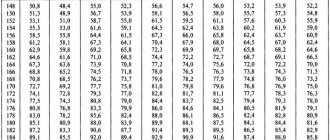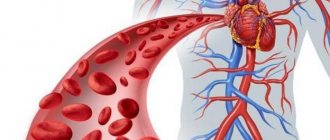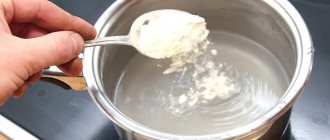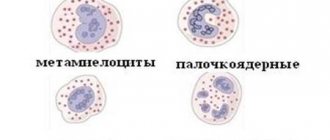According to current Russian legislation, every capable citizen over the age of 18 who has undergone a medical examination can become a donor of blood and its components. Body weight should not be less than 50 kg. There are certain contraindications to donating blood and its components. If you do not have the diseases listed in this list, you can be a donor. If you have diseases that are not included in this list, or you are taking any medications, your doctor will decide on donation. A medical examination of the donor before donating blood and its components and the issuance of certificates about his state of health are free of charge.
According to existing norms of blood donation:
- Whole blood can be donated once every 2 months;
- Plasma - 2 times a month;
- Thrombocytapheresis - 2 times a month;
- Erythrocytapheresis - once every 2 months;
- Granulocytapheresis - once a month.
Women can donate whole blood no more than four times within 12 months. Men - no more than five for the same period. Platelets and plasma - no more than 10 times for both men and women.
Following these recommendations is especially important if you are donating platelets or plasma. Neglecting them will not allow high-quality separation (separation of the necessary components) of your blood and will make donation impossible.
You can undergo an examination and donate blood in the department of blood transfusion and gravitational surgery, only by appointment and agreement with the doctors of the blood service.
See also: Procedure for examination and blood donation
You can become a blood donor if:
- You are 18 years old at the time of donation;
- Your weight is from 50 kg. and body mass index from 18.5 and not more than 40 (calculate BMI);
- You have original documents (passport and SNILS);
- Your donation deadline has come;
- You followed the recommendations BEFORE and AFTER donation;
- You are a citizen of the Russian Federation or a foreign citizen with supporting documents for at least 1 year of residence in the Russian Federation;
- You have no temporary or absolute contraindications;
- On the day of contacting the blood service institution, your group is in need according to the donor traffic light;
- You returned from a foreign country (including the CIS) more than a month ago;
- You have passed 1 month from the date of the full vaccination cycle;
- If you have COVID-19, at least 1 month has passed since your complete recovery.
Donor requirements
Donating blood for platelets is a complex procedure using a special apparatus that lasts two to three hours. This fact makes it necessary to present increased requirements to donors.
Only a completely healthy person can become a platelet donor
The following persons cannot be donors:
- under 18 years of age and over 50;
- having a body weight of less than 50 kg;
- pregnant and lactating women;
- drinking alcoholic beverages during the last 2 days;
- those who had tattoos or piercings, underwent surgery or vaccination less than six months ago;
- after a concussion;
- having transplanted organs and oncological pathologies;
- leading an immoral lifestyle (alcoholics, drug addicts);
- susceptible to diseases of the cardiovascular system, HIV infection, AIDS, allergic reactions, tuberculosis, asthma, ulcerative lesions, hepatitis;
- suffering from viral, inflammatory, as well as any chronic and acute pathologies, as well as malfunctions of the coagulation system;
- having mental pathologies, hearing, vision and speech impairments;
- undergoing drug therapy.
Also, platelet mass cannot be donated by women during menstruation.
The attending physician may not allow you to donate platelets for other reasons, providing reasons for his refusal.
Where to donate blood?
- The city blood transfusion station accepts donors without an appointment on weekdays (working days) from 09:00 to 13:00 and the first Saturday of the month from 09:00 to 13:00 according to the donor traffic light. Institution address: metro station Moscow Gate, Moskovsky Prospekt, building 104X (map).
- If for some reason you cannot donate blood at the City Blood Transfusion Station, then this can be done in the blood transfusion departments (BTD) at large healthcare institutions in St. Petersburg. Full list here.
- Opening hours during the New Year holidays. 31.12 — donors are not accepted; 01.01 — donors are not accepted; 02.01 - reception of donors from 09:00 to 13:00 without an appointment according to the donor traffic light; 03.01 — donors are not accepted; 04.01 — donors are not accepted; 05.01 - reception of donors from 09:00 to 13:00 without an appointment according to the donor traffic light; 06.01 — donors are not accepted; 07.01 — donors are not accepted; 08.01 - reception of donors from 09:00 to 13:00 without an appointment according to the donor traffic light; 09.01 — donors are not accepted. From 10.01 - in standard schedule.
Bone marrow donation is a complex issue, much more complex than blood donation. The likelihood of tissue compatibility between a specific patient and a random stranger is very low. In order to find a suitable donor with a high enough probability, you need to search among tens and hundreds of thousands of people. This is why bone marrow donor registries operate in various countries. This means that many thousands of volunteers undergo so-called typing (determination of the required HLA proteins), the results are entered into a database, and when it is necessary to find a donor for a specific patient, he can be pre-selected from this database, and then compatibility can be clarified, carrying out additional tests.
The largest registries number millions of potential bone marrow donors, while the Russian one currently has only 63 thousand. Searching for donors in the registries of other countries is quite expensive, and it is simply impossible to find a donor for some nationalities that live only in Russia. That is why it is so important that as many people as possible enter a single database.
When is a bone marrow transplant needed?
Bone marrow transplantation (BMT) is used primarily in the treatment of oncological diseases such as leukemia, lesions of the lymphatic system, neuroblastoma, as well as aplastic anemia and a number of hereditary blood defects. Transplantation of bone marrow cells from a donor is sometimes the only chance for a cure.
What is a bone marrow transplant?
A bone marrow transplant actually refers to a hematopoietic stem cell transplant. Hematopoietic (blood-forming) stem cells are formed in the human bone marrow and are the founders of all blood cells: leukocytes, erythrocytes and platelets.
Who can become a donor?
Any healthy citizen of the Russian Federation under the age of 45.
How is bone marrow typing done?
To determine your HLA genotype (typing), a blood test tube will be taken from you. A blood sample (up to 10 ml) of a person who wishes to become a donor of hematopoietic cells is examined in a specialized laboratory. Information about typing is entered into the Russian register of hematopoietic cell donors.
What happens after entering data into the register?
When a patient appears who needs a bone marrow transplant, his HLA genotype data is compared with the data of potential donors available in the registry. As a result, one or more “compatible” donors can be selected. The potential donor is informed about this, and he makes a decision whether or not to become an actual donor. For a potential donor, the probability of becoming a real donor is no more than 1%.
What are the chances that a potential unrelated donor will be found?
About 80% of all patients have at least one potential donor at the preliminary search stage. This percentage is constantly growing (in 1991 it was 41%), as many countries around the world are making great efforts at both the government and community levels to increase the number of potential unrelated donors and include all racial and ethnic groups .
Unfortunately, Russia has nothing to boast about in this regard—the unrelated donation program still does not enjoy government support. It is important to add that of these 80%, not all can serve as real donors, and for the remaining 20%, transplantation can often be successfully carried out from a donor who is not a perfect match, but only partially.
Can a potential donor refuse to donate?
Sometimes a potential donor who is suitable in all respects may decide not to become a real donor. There are a number of reasons not to donate, including poor health, time and effort, and fear of the risk of complications or painful procedures. As a volunteer, a potential donor is under no obligation. However, since human life depends on the decision of a potential donor, the significance of such a decision is explained to the potential donor repeatedly and from the very beginning. Changing your decision at the last minute can have fatal consequences for the patient waiting for a bone marrow donor. Donation imposes serious obligations on a person. Most potential donors go all the way, having weighed the pros and cons and understanding the importance of their decision not only for the patient, but also for themselves.
How does the stem cell donation procedure work?
There are two options. You donate either some of your bone marrow or stem cells from your blood. The choice is usually dictated by medical necessity.
If a donor donates bone marrow, a puncture is made under anesthesia in the pelvic bone, usually making 4 to 9 tiny incisions in the pelvic area, so small that subsequent stitches are not required, and then the required amount of bone marrow is removed with a surgical needle. The procedure takes about 30 minutes. The donor's bone marrow is completely restored within a few weeks. After such a procedure, the donor remains under the supervision of a doctor for several days in a specialized hospital.
If the donor donates peripheral blood cells, then a few days before donating blood, you need to start taking a special drug that promotes the release of stem cells from the bone marrow into the blood. That's because stem cells are taken from the bloodstream through a process called apheresis (similar to plasma or platelet donation), where blood from a vein in one arm is passed through a special hematopoietic stem cell separation device and returned to the bloodstream through the vein in one arm. other hand. Of course, this procedure is performed under sterile conditions. You need to spend 5-6 hours in a relatively motionless state, but there is no need for hospitalization or anesthesia. Recovery of the taken cells takes place in 7-10 days.
Is there a risk to the donor's health?
Bone marrow donation is a surgical procedure that carries minimal risk. Serious complications are rare. They can be caused by individual reactions to anesthesia; cases of infection and reactions to the insertion of a surgical needle have been recorded. After bone marrow collection, the donor may experience pain in the operated area for some time. A hematopoietic stem cell donor may experience bone pain, muscle pain, nausea, insomnia, and fatigue from the drug taken before surgery. The most common side effects are headache and bone pain. These painful sensations go away immediately after the stem cells are collected. During apheresis, some donors complain of tinnitus due to the use of an anticoagulant to prevent blood clotting. At the end of the procedure, these effects gradually disappear. Observations of 20,000 hematopoietic stem cell donors over a long period of one to five years after transplantation showed that the risk of side effects after the apheresis procedure is extremely low. As an illustration, we note that the youngest related donor of hematopoietic stem cells in Russian practice was 1.5 years old; a donor of 11 months of age is known in the world.
Why are there so few people willing to become a bone marrow donor and what should be done?
The main thing is basic education. Many people simply do not understand what it means to be a bone marrow donor. They believe it is a procedure involving sawing through bones and removing a vital organ. It is important to explain that the collection of bone marrow cells does not pose any danger to the donor and he will be restored to the required quantity within a few days.
Entry into the register of potential bone marrow donors at City Clinical Hospital No. 52
The blood transfusion department of City Clinical Hospital No. 52 joined the creation of a national register of potential bone marrow donors. Now all donors who come for donation can undergo typing and be included in the register.
To join the register you need:
- sign an agreement on voluntary entry into the bone marrow donor register;
- donate 10 ml of blood from a vein.
Information on the Rusfond website. Register News
Social support measures for donors
- Rest days. After donating blood, the donor receives a certificate that gives him the right to 2 days off during the calendar year from the date of donation (Article 186 of the Labor Code of the Russian Federation). Full text of explanations for the employee and employer with all references to legislative acts.
- Nutrition compensation. City institutions, in accordance with regulations, pay a gratuitous blood donor monetary compensation for food in the amount of 5% of the cost of living established for residents of the city of St. Petersburg (as of June 2021 - 654 rubles), as well as in accordance with Chapter 12 of the Law of St. -Petersburg “Social Code of St. Petersburg” we make an additional one-time payment for food to a donor who has proof of residence in St. Petersburg (as of June 2021 - 814 rubles). Please note that food compensation is not payment for blood. With the funds received, the donor must replenish his strength, namely, eat more and drink more fluids.
How is blood donation done?
Point No. 1 - registration. At the registry, the donor provides a passport and SNILS, and after checking in the information databases, our specialist draws up a card and gives the donor a questionnaire in which he must indicate information about his state of health and lifestyle. Try to answer all questions as truthfully as possible to ensure the safety of you and our patients. A donor who deliberately concealed or distorted information known to him about the state of health when performing a donor function bears liability established by the legislation of the Russian Federation if such actions resulted or could result in harm to the life or health of recipients.
- You can save your time at the institution - fill out the donor form and 3 informed consents and come with the completed documents. The file can be downloaded here. It must be completed legibly with your own hand (in block letters in black or blue ink). Consents filled out in the wrong form will not be accepted.
Point No. 2 - laboratory for rapid blood finger test. The donor is examined in the laboratory to determine the hemoglobin level, blood type and additional parameters (for component donors). The results of this examination determine whether a person can become a donor on that day.
Point No. 3 - transfusiologist. The doctor examines the donor, studies the questionnaire, asks additional questions about health, lifestyle and habits, evaluates the examination results and makes a decision on suitability for donation. ...We remind you that the final decision on the admission of a donor to the procedure, as well as determining its type and volume, is made only by the transfusiologist of our institution, guided by the List of contraindications to donation of blood and its components, Standards for the composition and biochemical parameters of peripheral blood, Intervals between types donation (link to document). In case of medical withdrawal, the transfusiologist explains to the donor the reason and duration of the withdrawal. If necessary, the donor is sent for examination to an outpatient clinic at the place of residence. If, during the examination of the donor and the collection of his medical history, assessment of his general health, as well as the associated lifestyle, there is a suspicion of drug addiction or behavior leading to the risk of contracting infectious diseases transmitted by blood, the donor should be diverted from donating blood and its components (link to document).
Point No. 4 - rest and tea before donation. Before donating blood, the donor is asked to eat before the procedure. To balance fluid in the body, it is recommended to drink more, for example, water or weak tea with cookies. We offer our donors delicious sweet tea and fragrant cookies =)
Point No. 5 - donation. The donation procedure is carried out in the most comfortable conditions for the donor. Blood is collected in specialized disposable sterile and closed systems. Video about how donation takes place.
Point No. 6 - compensation for food and rest days. After donation, each donor is issued a certificate, which gives the right to certain benefits and privileges (Read in the “Documents for Donors” section). The donor also receives compensation for food in order to regain strength after donating blood or its components.
The medical examination of the donor is carried out in full compliance with the order of the Ministry of Health of the Russian Federation No. 1166n dated October 28, 2020.
Stages of donating platelets and the essence of the procedure
Platelet donation can be carried out intermittently and by hardware.
In the first case, blood is taken from the donor, platelets are then isolated from it using a centrifuge, and infused back into the human body. The duration of the procedure depends on the rate at which the required number of blood platelets is collected, which, in turn, is affected by the weight of the donor. This technique is used in rare cases due to its duration and complexity.
In hardware plateletpheresis, special units are used that have the ability to continuously centrifuge blood. They allow the healthcare professional to monitor the speed of the procedure and the person’s condition. Typically, Dideco-Exel, Amikus, and Baxter equipment is used.
The non-contact operating principle of the system makes the manipulation absolutely sterile.
The device is controlled using a computer with all information about the manipulation displayed on its monitor
After passing the necessary tests and receiving permission from the doctor:
- The donor sits in a comfortable chair, his arm is fixed.
- A special sterile tube is connected to the device at one end. A sterile needle is placed on the other side and inserted into the vein.
- An identical manipulation is carried out with the second hand.
- One tube carries the blood into the machine, where platelet mass is released. The return of the treated blood to the other arm is carried out through a second hose.
- After manipulation, the donor is given bandages at the puncture site, which cannot be removed for several hours. In addition, they give you strong tea to drink and chocolate to eat. If dizziness occurs, you should rest or seek help from a nurse.
Please note that a one-time blood draw should not exceed 500 ml. Obtaining a sufficient number of platelets is achieved by distilling the blood several times, which significantly increases the duration of the manipulation. So, if a typical blood donation does not exceed 15 minutes, plateletpheresis can last more than two hours.
The isolated platelet mass (orange-brown) is collected and stored in sealed bags for no more than 5 days with regular stirring to avoid the formation of clots.
How to install a donor’s personal account and mobile application?
- You need to download the blood service mobile application (Google Play, App Store, AppGallery);
- You need to receive a donation code. You can receive a donation code by contacting the reception of the City Blood Transfusion Station or the specialists of the institution’s visiting team after making at least 1 (one) donation. ATTENTION! In the case of donation in an off-site setting (on-site team), the code can initially be obtained only at the second donation. The code is issued once in printed form or as an SMS. The code can be sent to the donor via SMS when contacting the specialists of the City Blood Transfusion Station with the following information provided: full name (full name), date of birth (full), mobile phone number. If the mobile phone indicated in the system differs from the mobile phone indicated in the donor’s message, the donor must contact the institution in person with a passport to receive a code and enter current data into the system;
- You must enter a unique 20-digit donation code when registering in the mobile application. Please note that it may take up to 24 hours from the time you receive your donation code to be activated for access to your Personal Account. The results of a complete laboratory test will be available no earlier than 48 hours after the complete donation. If more than 24 hours have passed since receiving the code, but it is still inactive, we recommend contacting technical support
Detailed information about the mobile application is here.
Useful information for donors
- Video about preparing for donation here
- Video about donor behavior after donation here
- Video about the need for regular donation here
- Video about myths associated with blood donation here
- Video about the path of donor blood after donation here
When reprinting information, it is mandatory to use a hyperlink to the original source of information:
- Share:
- Livejournal
- Blogs@Mail.ru
- LiveInternet
- MySpace
Print page










